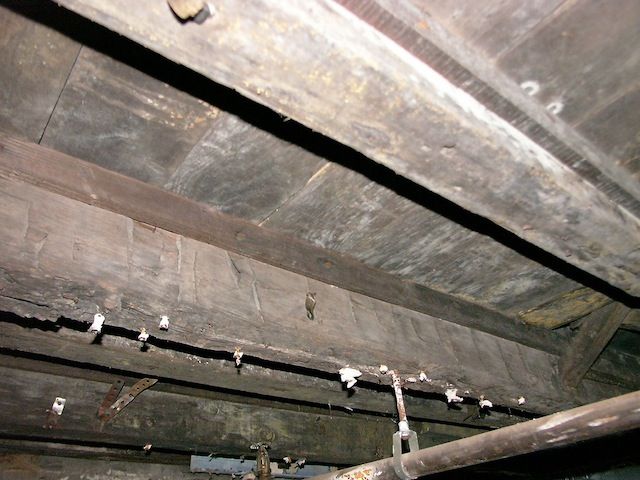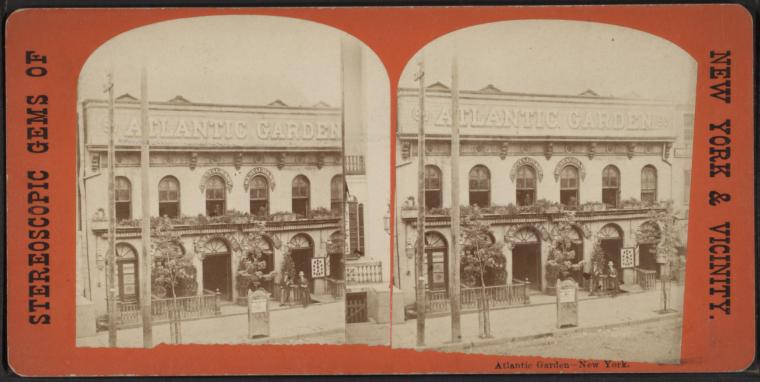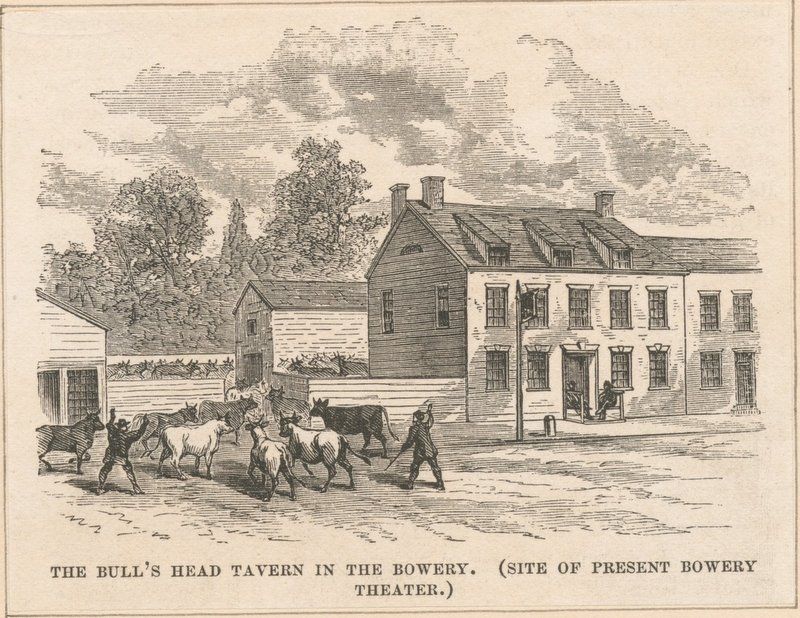Last Chance to Catch NYC's Holiday Notalgia Train
We met the voices of the NYC subway on our nostalgia ride this weekend!



An anonymous tipster sent around this photo, purportedly from the cellar of what was once Bull’s Head Tavern, in an attempt to reassess the historical value of the 50 Bowery location before its impending demolition.
We received a tip this weekend from a source that wished to remain anonymous about the construction at 50 Bowery. The demolition will amount to a 22-story hotel at the site which was once Atlantic Garden, a prominent German beer hall from the late 19th Century. Though much of the Atlantic Gardens has been demolished in the process which is slated to end this month, the source reports that the cellar (pictured above) could remain relatively untouched from its 18th-century use as Bull’s Head Tavern.

Atlantic Garden. Image from New York Public Library.
Atlantic Garden, which opened in 1858, was a significant cultural meeting place for the predominantly German population of the area. It was situated just north of the Bowery Theatre, and as this 1910 New York Times article describes, began to face competition at the beginning of the 20th Century, resulting in its eventual shut down:
“Dwellers of the Bowery paused and rubbed their eyes yesterday when they passed Atlantic Garden, for the front of the famous old resort, which has stood almost unchanged on its site just below Canal Street since before the Civil War, was plastered over with billboards in Yiddish announcing a Hebrew variety programme. The old Atlantic Garden that William Kramer established in 1858 is a thing of the past.”
The significant detail, here, for preservationists is exactly it’s “unchanged” nature. The tipster notes that 50 Bowery’s prior tenant, Bull’s Head Tavern, was primarily used during the city’s colonial age as somewhat of a “gate house to New York as anyone traveling in or out of the city by land passed right by. It was significant during the revolution and was occupied by soldiers for most of the war, including [General] Washington.” The rear of the area was used in the early 19th Century as a coal yard, which was mostly above ground. When Atlantic Garden was established at the former Bull’s Head, the construction did not disturb the cellar area of the Tavern and the and AH’s later expansion to Elizabeth Street helped to preserve the history below ground.
“My conclusion is that sitting under a few feet of flooring, stone and coal is a largely if not entirely undisturbed colonial to post civil war archaeological site in immediate danger of being destroyed. Mind you not just any colonial site but arguably the most significant late colonial – revolutionary period site in Manhattan.”

Image from New York Public Library
David Freeland, the author of Automats, Taxi Dances and Vaudeville, detailed in his book the historical value of unearthing the location, and its uncanny ability to survive throughout the years:
…the Atlantic was far from secure, coming under frequent attack from police housed, conveniently, on Elizabeth Street. Still, it managed to survive through the perseverance of one man, the founder and proprietor William Kramer, who fought murky legal strictures and the cos elected to enforce them for the bulk of its existence. From the Atlantic’s peak in the 1870s all the way to the Gay Nineties, few years passed without raids,arrests and arraignments…”
Funny enough, much of Kramer’s trouble was simply because he served the German “Lagerbier” which wasn’t considered a fashionable “Anglo-Saxon American” drink.
Yesterday, Curbed NY reported that they spread the word about this find to architectural historian Kerri Culhane who was responsible for adding the Bowery to the National Register of Historic Places. She agreed to alert the Landmarks Preservation Commission and had this to say:
Bulls Head Tavern and Atlantic Garden are really two of the most significant sites of their respective eras of New York City history, and it is amazing that they are built on top of one another and that there are some bones left. (An) archaeological investigation could tell a lot about the use and material culture of these places. There are plenty of historic sites claiming that Washington slept here, but in the case of the Bull’s Head Tavern we really do know that Washington at least had a drink there. The good thing about archaeology from a developer’s perspective is that it removes the historic artifacts and we learn from the site but it does not prevent construction from happening.
Hopefully the newly discovered details about this cellar can slow the demolition enough for the site to be assessed more fully, considering it can potentially be the oldest structure in Manhattan by about 50 years. Sadly, archeological finds in basements don’t seem to have a good track record in preserving structures–a supposed stop on the Underground Railroad was demolished to make way for Atlantic Yards, despite community resistance.
Subscribe to our newsletter